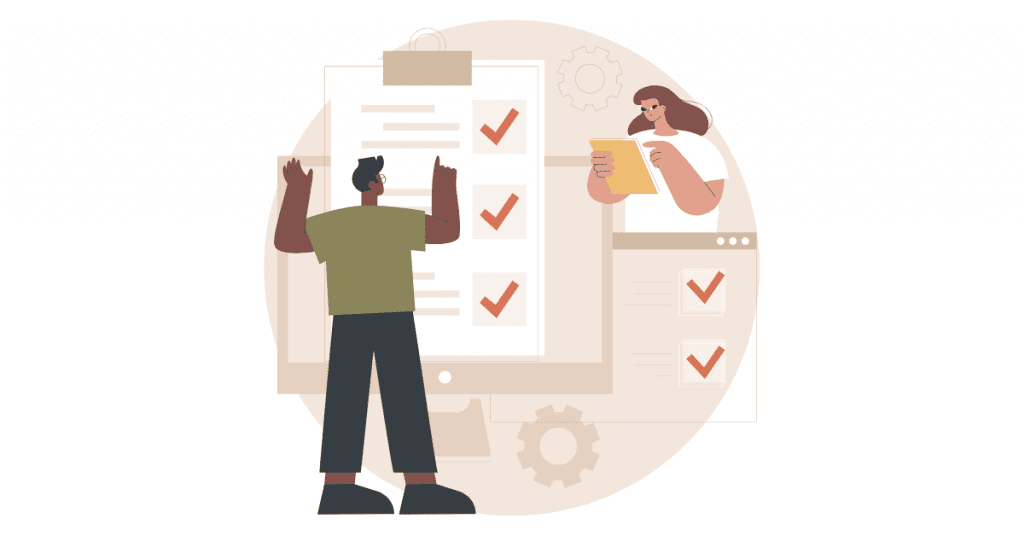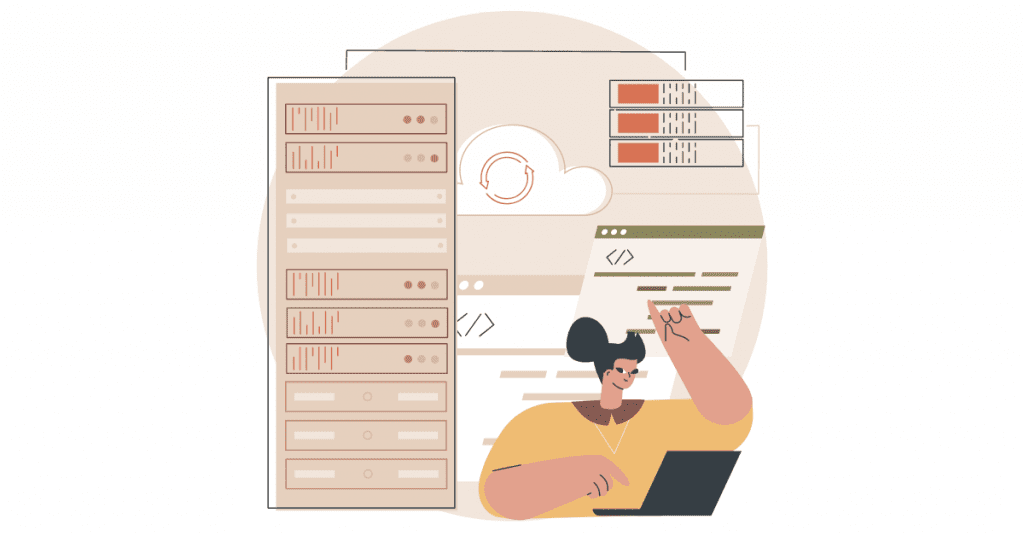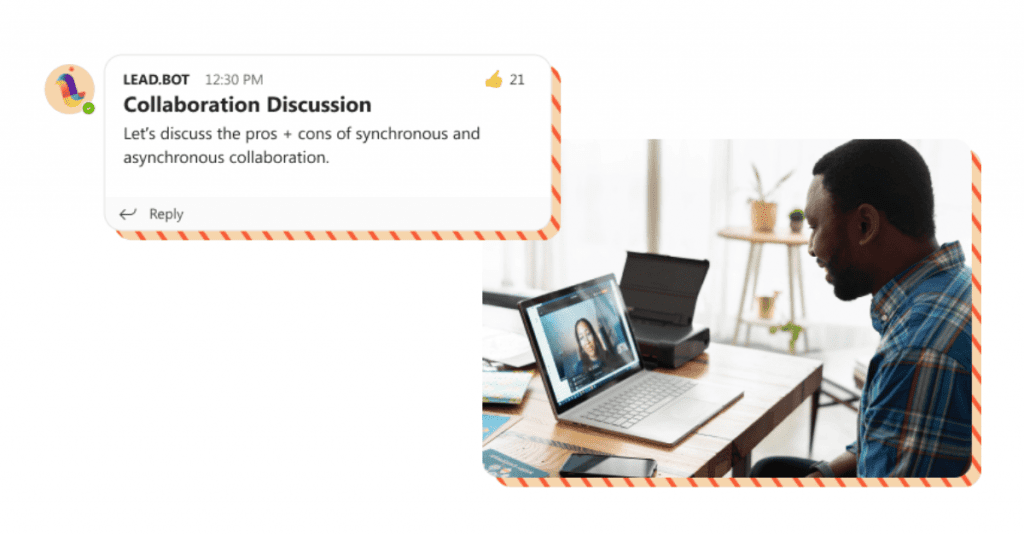How to Implement 360-Degree Feedback?
1. Define Your Objectives
- Determine the primary goals and desired outcomes of the 360-degree feedback program.
- Decide on the competencies or behaviors to assess.
- Plan on how the feedback will be integrated with performance management systems.
- Establish measures to gauge the success of the program.
To lay a robust foundation for your 360-degree feedback initiative, it’s crucial to delve deep into the underlying objectives. Addressing key questions can help illuminate the path forward:
- What motivates our organization to adopt a 360-degree feedback approach?
- Which specific competencies or behaviors are we aiming to evaluate?
- What is the primary application of the feedback? Are we focusing on nurturing employee growth, enhancing performance, pinpointing talent, or a blend of these intentions?
- How do we plan to merge the feedback results with our existing performance management strategies?
- What kind of resources and backing will we offer employees based on the insights gathered?
- What benchmarks will we use to evaluate the program’s efficacy?
By tackling these considerations from the outset, you’re poised to design a 360-degree feedback system that resonates with your organization’s aspirations and requirements.
2. Develop a Feedback Framework
- Identify and define core competencies aligned with company values.
- Articulate observable behavioral indicators for each competency.
- Test the framework and adjust based on feedback.
- Modify the framework for different organizational roles.


Zone in on Core Competencies (HR & Senior Management)
- HR’s Role: Research and list down possible competencies that align with the company’s ethos and objectives.
- Senior Management’s Role: Approve and prioritize the competencies that are most crucial for the organization’s success.
Detail Out Behavioral Indicators (HR & Managers)
- HR’s Role: Draft behavioral indicators for each competency. This provides a template or a starting point.
- Managers’ Role: Review and refine the indicators based on their firsthand experience with their teams, ensuring they are both discernible and quantifiable.
Framework Evaluation (HR, Selected Managers & Employees)
- HR’s Role: Organize a pilot program, select participants, and gather feedback.
- Selected Managers’ Role: Participate in the pilot, provide feedback on clarity and effectiveness, and suggest improvements.
- Employees’ Role: Engage in the pilot, provide feedback based on their understanding and experience of the proposed framework.
Role-Specific Customizations (HR & Managers of Different Departments)
- HR’s Role: Develop a basic framework that is adaptable to various roles within the organization.
- Managers’ Role (Across Departments): Customize the provided framework to fit the specific needs, competencies, and behavioral cues of their department or team.
By clearly defining roles in the process, both HR and managers can collaborate more effectively, ensuring the creation of a comprehensive and effective 360-degree feedback framework.
3. Design the Questionnaire
- Focus on a limited set of crucial competencies.
- Use observable behaviors to frame questions.
- Combine rating scales with open-ended questions.
- Encourage balanced feedback and provide clear instructions.
- Review and adjust the questionnaire as needed.


An impactful 360-degree feedback program leans heavily on a well-curated questionnaire. Here’s how to design one that captures precise and actionable insights:
Prioritize Brevity and Precision
- Tip: Zero in on a handful of vital competencies. Less is more.
- Good Example: “On a scale of 1-5, how effectively does [Employee’s Name] handle client objections?”
- Bad Example: “Do you think [Employee’s Name] is good at their job?”
Anchor on Observable Behaviors
- Tip: Tailor questions around tangible actions to avoid subjectivity.
- Good Example: “How often does [Employee’s Name] meet project deadlines?”
- Bad Example: “Is [Employee’s Name] a hard worker?”
Blend Rating Scales with Open-ended Queries
- Tip: Balance quantitative metrics with qualitative insights.
- Good Example: “Describe an instance when [Employee’s Name] demonstrated leadership skills.”
- Bad Example: “Do you like [Employee’s Name]’s leadership style?”
Promote a Balanced Feedback Spectrum
- Tip: Frame questions that spotlight strengths and pinpoint areas for growth.
- Good Example: “What is [Employee’s Name]’s most commendable trait? What area could use improvement?”
- Bad Example: “What don’t you like about [Employee’s Name]?”
Clarify the Process
- Tip: Furnish raters with clear guidelines to ensure the feedback is consistent and accurate.
- Good Example: “Rate [Employee’s Name]’s communication skills during team meetings, considering clarity, brevity, and effectiveness.”
- Bad Example: “How’s [Employee’s Name]’s communication?”
Iterate and Evolve
- Tip: Make periodic evaluations a norm, tweaking based on real-time feedback.
- Good Example: Conducting semi-annual focus groups to discuss the questionnaire’s effectiveness.
- Bad Example: Sticking to the original questionnaire format without considering feedback.
By employing a structured approach and leveraging AI tools such as ChatGPT, HR professionals can sculpt a feedback program that continually drives organizational growth and development. ChatGPT and similar generative AI models can significantly assist HR in multiple ways:
- Questionnaire Drafting: AI can help in generating a diverse set of questions based on specified competencies, ensuring inclusivity and broad coverage.
- Feedback Analysis: AI can sift through both quantitative and qualitative feedback, identifying trends, patterns, and areas of focus more quickly than manual analysis.
- Continuous Iteration: Based on feedback received, AI can suggest modifications or entirely new questions to keep the questionnaire relevant and effective.
4. Select a Suitable Platform
Choosing a platform for your 360-degree feedback program isn’t just about the immediate needs; it’s about understanding evolving HR trends and where the industry is headed. Here’s a streamlined guide on selecting the right platform and navigating the changing landscape:


Usability is Key. Opt for platforms with clear, intuitive interfaces. Feedback, inherently, can be a sensitive process, so simplicity in navigation and process is crucial.
Customizability is Power. Every organization is unique. Your platform should accommodate custom questionnaires, varied rating scales, and tailored competency frameworks.
Safety First. With sensitive personal feedback at play, robust security measures aren’t just desirable; they’re non-negotiable.
Insightful Reporting. Your chosen platform should present data in a digestible manner, with a mix of quantitative metrics and qualitative insights.
Seamless Integration. Compatibility with existing HR tools or performance systems can transform feedback data into actionable developmental strategies.
Reliable Support. A hiccup in the feedback process can be detrimental. Prioritize platforms with dependable training and support frameworks.
Cost Efficiency. Balancing budgetary constraints with platform capabilities is essential. Ensure transparency in pricing to avoid hidden costs.
Vet the Vendor. Before committing, probe the provider’s track record. Testimonials and reviews can offer valuable insights into their reliability and service quality.
Pulse Surveys vs. 360-Degree Feedback
While both pulse surveys and 360-degree feedback tools gather insights on employees, their core focus and methodology differ:
When distinguishing between pulse surveys and 360-degree feedback, it’s essential to understand their core methodologies and intentions. Using a specific example, like LEAD.bot, can further highlight these differences.
Pulse Surveys
- Nature: These are brief, regular checks on employee sentiment. They are geared towards capturing the “heartbeat” or prevailing mood of the organization.
- Frequency: Pulse surveys are often conducted frequently—sometimes weekly, bi-weekly, or monthly—to gather real-time insights.
- Scope: Instead of engaging the entire company every time, platforms like LEAD.bot allow targeted delivery, reaching specific groups or departments based on the topic at hand.
- Question Count: Typically concise, with LEAD.bot, for instance, posing around five questions during a survey.
- Confidentiality: To promote candidness, responses are kept anonymous. LEAD.bot ensures answers remain confidential, fostering psychological safety and trust among employees.
- Example: A question from a pulse survey might be: “On a scale of 1-10, how supported do you feel in your current project?”
360-Degree Feedback
- Nature: Comprehensive evaluations that capture feedback on an individual’s performance from multiple perspectives, including peers, managers, subordinates, and sometimes even clients.
- Frequency: These feedback sessions tend to be less frequent, often conducted annually or bi-annually.
- Scope: Usually involves a broader spectrum of participants, ensuring a holistic view of an employee’s performance.
- Question Count: Tends to be more extensive, diving deep into various competencies and behaviors.
- Confidentiality: While responses are often anonymized, the nature of the feedback can sometimes make anonymity challenging.
- Example: A typical question might be: “Rate John’s ability to lead a team during challenging projects on a scale of 1-10.”
At their core, both pulse surveys and 360-degree feedback aim to enhance individual performance and overall organizational health. Pulse surveys act as quick, real-time thermometers, gauging the immediate sentiment, while 360-degree feedback offers a more detailed, encompassing assessment of an individual.
Recognizing the unique strengths of each, many companies adopt a hybrid approach, tapping into platforms like LEAD.bot for pulse checks and resorting to specialized systems for in-depth 360-degree insights. While there’s common ground in valuing employee feedback to spur organizational growth, their specific approaches address varied feedback dynamics.
Evolving Industry Perceptions & Trends
While 360-degree feedback has its advocates, there’s a rising sentiment that it might not always serve its intended purpose. Some critiques center on the potential for bias, the stress it can induce, or its occasional lack of actionable insights.
Trending now are continuous feedback models, where feedback becomes an ongoing dialogue rather than an annual event. Companies are gravitating towards real-time feedback tools, emphasizing employee growth and immediate course corrections. Organizations like Adobe and GE have moved away from traditional performance reviews, championing these newer, agile models.
By staying informed on these trends and carefully weighing platform essentials, you’ll position your organization for feedback success, both now and in the future.
5. Identify Participants
Diverse Representation. Incorporate a comprehensive mix of respondents for a holistic view. This should encompass:


- Self-assessment: Where the individual evaluates their own performance.
- Peers: Colleagues who work alongside the individual and can provide insights into teamwork, collaboration, and day-to-day interactions.
- Subordinates: Team members who report directly to the individual, offering a view of their leadership, guidance, and managerial skills.
- Superiors: Managers or supervisors who can evaluate the individual’s alignment with organizational goals, overall contribution, and growth potential.
- External Stakeholders (if applicable): Partners, clients, or vendors who can share perspectives on the individual’s professionalism, communication, and effectiveness in external interactions.
Fostering Openness. Before the feedback process begins, engage with potential participants. Discuss the importance of candid feedback for the growth of the individual and the organization. Stress that frankness, while maintaining respect, will make the exercise truly beneficial.
Confidentiality Assurance. Reiterate to all participants that their feedback will remain confidential. Use aggregated data when presenting results to ensure no specific comments can be linked to an individual respondent. This step is crucial in establishing trust, which, in turn, encourages honest and open feedback.
6. Launch and Monitor the Program
Launching your program requires careful planning to ensure a seamless process. Here are the crucial steps to guide you:


Clear Communication with Participants. Dispatch a detailed message to everyone involved – those receiving feedback (participants) and those giving it (raters). This communication should underline the program’s objectives, its significance, and the expected completion dates.
Guide on Procedures. Furnish participants with a step-by-step guide on how to access and finish the feedback form, elucidating rating scales, open-ended questions, and best practices for imparting constructive feedback.
Assist When Needed. Offer a go-to support contact or team that participants can reach out to for any queries or technical hitches during the feedback phase.
Emphasize Confidentiality. Assure participants of the strict confidentiality and anonymity of the process. Stress that only cumulative data will appear in reports, upholding the principles of employee psychological safety.
Track the Journey. Regularly check in on the program’s progression to spot any potential challenges or lags. Given that securing a high response rate often necessitates multiple nudges from HR, be prepared for regular follow-ups. An average response rate for such feedback programs can hover between 50-70%, though this can vary based on organizational culture and engagement levels.
Advocate and Celebrate Participation. Publicize the program’s inception and spur involvement via internal channels, bulletins, or minor rewards. Recognize that employee buy-in often requires nurturing an environment where they feel their voice matters and is heard.
Reinforce the Importance of Participation. Understand that achieving a high response rate often requires HR’s continuous effort. It’s not uncommon for HR teams to send several reminders to ensure broad participation.
By meticulously overseeing the launch, you pave the way for a 360-degree feedback initiative that bolsters individual growth, enhances team dynamics, and instills a culture of perpetual betterment in the company.
7. Data Analysis and Feedback
Once the 360-degree feedback data is in hand, the subsequent steps are pivotal to harness its full potential and draw actionable insights:


Aggregate Data for Anonymity. When sharing feedback outcomes with an individual, use consolidated data to protect respondents’ identities. This approach guarantees that specific remarks can’t be traced back to any single rater.
Celebrate Proficiencies. Acknowledge and applaud the notable competencies and commendations an individual receives. Such positive reinforcement can act as a powerful incentive, spurring individuals to further hone their strengths.
Zero in on Development Needs. Collaborate with the individual to pinpoint specific development areas highlighted by the feedback. Establish KPIs (Key Performance Indicators) and OKRs (Objectives and Key Results) to chart a clear roadmap for growth. KPIs typically emphasize performance metrics, while OKRs center on aligning individual goals with broader organizational objectives. By using SMART (Specific, Measurable, Achievable, Relevant, Time-bound) principles, you ensure these goals are practical and focused.
Eschew Comparisons. Caution individuals against juxtaposing their feedback with their peers. Feedback is tailored, keeping in mind one’s unique role, responsibilities, and context.
Delve into Advanced People Analytics. Consider leveraging more intricate people analytics for deeper insights. Organizational chart analytics gives a hierarchical view, focusing on structures, roles, and relationships. On the other hand, Organizational Network Analysis (ONA) delves into the informal networks, mapping out interactions, collaborations, and information flows within the organization. While org chart analytics may highlight structural challenges, ONA can spotlight collaboration or communication bottlenecks.
By meticulously navigating the feedback data and aligning it with growth-centric strategies, the 360-degree feedback initiative can be transformed into a cornerstone for both individual progression and organizational development.
8. Crafting Employee Development Blueprints
Collaborative Feedback Discussion. Sit down with the employee to comprehensively review and discuss the feedback received.
Formulate SMART Objectives. Together, outline Specific, Measurable, Achievable, Relevant, and Time-bound goals. Break these overarching objectives into manageable tasks and define key milestones for accomplishment.
Resource Allocation & Challenge Anticipation. Identify tools, training, and resources required for goal realization. Also, forecast any potential roadblocks or challenges that may arise and devise strategies to navigate them.
Ongoing Monitoring & Support. Regularly touch base with the employee, making any necessary adjustments to the plan. Ensure they have the requisite support and resources to stay on track.
9. Enhancing the Feedback Mechanism
Solicit Participant Perspectives. Post-feedback, engage with participants to understand their experience and gather suggestions for improvement.
Evaluate Feedback Infrastructure. Periodically assess the feedback tools or platforms in use. Determine if upgrades or changes are necessary to facilitate a smoother feedback process.
Empower Through Training. Invest in training sessions to elevate the quality of feedback provided. Additionally, guide managers and employees on interpreting feedback constructively and effectively.
How LEAD.bot can Enhance the Feedback Process?
LEAD.bot is an innovative tool designed not just for building trust and promoting open communication but also for integrating key organizational functions. Originally devised to pair individuals for virtual coffee chats, its capabilities have expanded to facilitate mentoring programs, DEI initiatives, team-wide watercooler conversations, new hire onboarding, 30-60-90 days check-ins, manager check-in reminders, pulse surveys, work anniversary celebrations, and even ONA (Organizational Network Analysis) for advanced people analytics.
LEAD.bot seamlessly integrates with Slack and Microsoft Teams, two of the most prominent communication platforms in today’s corporate landscape. This integration amplifies its utility and accessibility within modern workplaces. Leveraging direct integration with these platforms ensures real-time responsiveness and enhanced user engagement compared to traditional channels like email. The immediacy and familiarity of Slack and Microsoft Teams encourage more active participation, whereas emails can get buried under a deluge of messages, leading to delays or even missed opportunities.
So, how does LEAD.bot bolster the feedback process?
Cultivates Trust. Regular interactions facilitated by LEAD.bot help form bonds among team members. Trust is foundational for feedback to be perceived constructively. As relationships are fostered, feedback begins to be viewed more as opportunities for growth than mere criticism.
Encourages Casual Conversations. A relaxed atmosphere paves the way for honest and open communication. LEAD.bot’s virtual coffee chats create environments conducive to friendly, candid exchanges, setting the stage for productive feedback sessions.
Dismantles Silos. As companies scale, the risk of departmental isolation increases. LEAD.bot’s cross-functional virtual chats enable relationships that transcend departmental boundaries, encouraging unified collaboration towards overarching organizational goals.
Enables Deeper People Analytics with ONA. By integrating Organizational Network Analysis, LEAD.bot offers insights into the interrelationships within an organization. This can inform leadership about communication gaps, influencers, and potential collaboration opportunities.
Facilitates Smooth Onboarding and Regular Check-ins. With tools for new hire onboarding and reminders for periodic check-ins, managers can maintain a pulse on team dynamics, ensuring that new employees integrate well and that established team members continue to thrive.
Pulse Surveys and Celebrations. With pulse survey functionalities, LEAD.bot allows for real-time insights into organizational sentiment. Combined with features like work anniversary celebrations, it ensures that both milestones and daily sentiments are acknowledged and celebrated.














